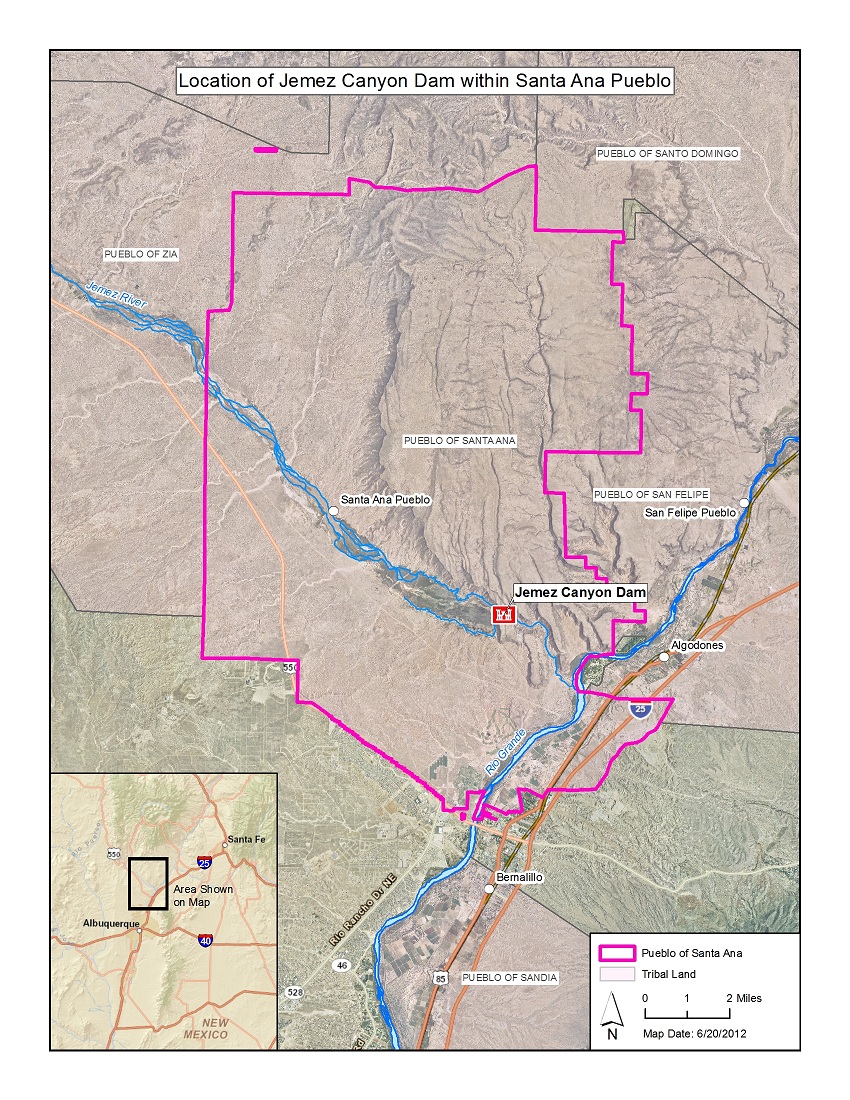The Jemez Canyon Dam and Reservoir Project is located on the Jemez River 2.8 miles upstream from its confluence with the Rio Grande. It is situated in Sandoval County, about 5 miles northwest of Bernalillo, New Mexico, and about 22 miles north of Albuquerque. The facility regulates Jemez River flows for flood damage reduction and sediment management. All lands associated with the Jemez Canyon Dam and Reservoir Project (about 6,711 acres) is held in trust by the United States for the beneficial owners, the Pueblo of Santa Ana. The Department of the Army and the Pueblo signed a Memorandum of Understanding (MOU) in 1952 (amended in 1978 by P.L. 95-498) which established a perpetual right and privilege for the construction, operation, and maintenance of the Jemez Canyon Dam and Reservoir Project. The Pueblo of Santa Ana reserved the right to use all associated lands for any purposes not inconsistent with those expressly granted to the Federal Government for the facility.
For some time, field research has indicated that too much sediment has been removed from the Rio Grande system with the placement of Cochiti and Jemez Canyon Dams. This has resulted in a trend for the Jemez River and particularly the Rio Grande downstream of the dam to evolve from a wide sand-bed river into a narrow gravel channel with a vertical bed lowering up to 12 feet. This evolution has resulted in the loss of critical habitat along the floodway as well as increased levee erosion protection being required due to the narrow meandering channel migration.
The US Army Corps of Engineers, Albuquerque District and the Pueblo of Santa Ana propose an integrated plan of construction and monitoring to contribute sediment to the Rio Grande. The proposed project, developed in consultation between the Corps and the Pueblo, includes modifications to Jemez Canyon Dam’s tower and outlet works, the construction of a grade-stabilizing weir on the Jemez River upstream of the Dam (which was completed in 2006) and continued monitoring for potential impacts to Santa Ana Pueblo’s natural, cultural and economic resources.
The proposed construction will provide multiple benefits: 1) the proposed tower modifications will allow efficient and flexible capacity for sediment contribution to the Rio Grande. An increase in the Rio Grande sediment load will directly promote the recovery or restoration of the critical habitat of the Rio Grande silvery minnow, 2) construction of the gradient stabilization weir is crucial to prevent impacts to habitat important to the Pueblo of Santa Ana fulfilling the Tribal trust responsibilities of the federal government, and 3) the Pueblo of Santa Ana will have the opportunity to enhance their capability in the area of resource management and regional water operations.
